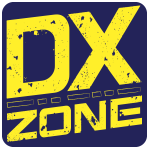JT65 is one of the weak-signal digital modes supported by WSJT, an application written in 2001 by Joseph Taylor K1JT, astrophysicist and Nobel Prize in Physics, and released as open source in 2005.
WSJT was initially developed for VHF communications and in particular mode for Meteor-Scatter and Moon-Bounce (EME). The particularity of this protocol is that permit to decode signals many decibels below the noise floor.
Like all other digital modes, it requires a PC with software, and a sound card interface but need the PC to be correctly in time sync because contacts with this mode need to be done in a very particular procedure.
QSO Procedure
Contact is done 60 seconds at a time. For 48 seconds, a station will transmit, and then there are 12 seconds of silence. During the next minute, the other station transmits again for 48 seconds, followed by 12 seconds of silence once more.
During the silence period, the software will decode received text and the receiving station can decide to answer a CQ, or reply to a call.
Protocol characteristics
During transmission messages are encoded and compressed with a process known as forward error correction (FEC). The FEC adds redundancy to the data, such that all of a message may be successfully recovered even if some bits are not received. This implies that messages are either decoded correctly or not decoded at all.
By working with JT65A you will notice that:
- during each transmission the maximum number of characters can be sent is 13
- messages are not displayed in real time but only at the decoding time frame.
- Messages received are typically error-free
- even with 1 watt you will be received by several stations
Common JT65A HF Frequencies
All frequencies (kHz) assume a transceiver display in USB mode
1838 – 3576 – 7076 – 14076 – 10139 – 18102 – 21076 – 24920 – 28076
Best Resources about JT65A
Some interesting links from our JT65A operating mode links collection
JT65A Software
A selection from our JT65A Software links collection
JT65A Videos
From our Youtube Channel










